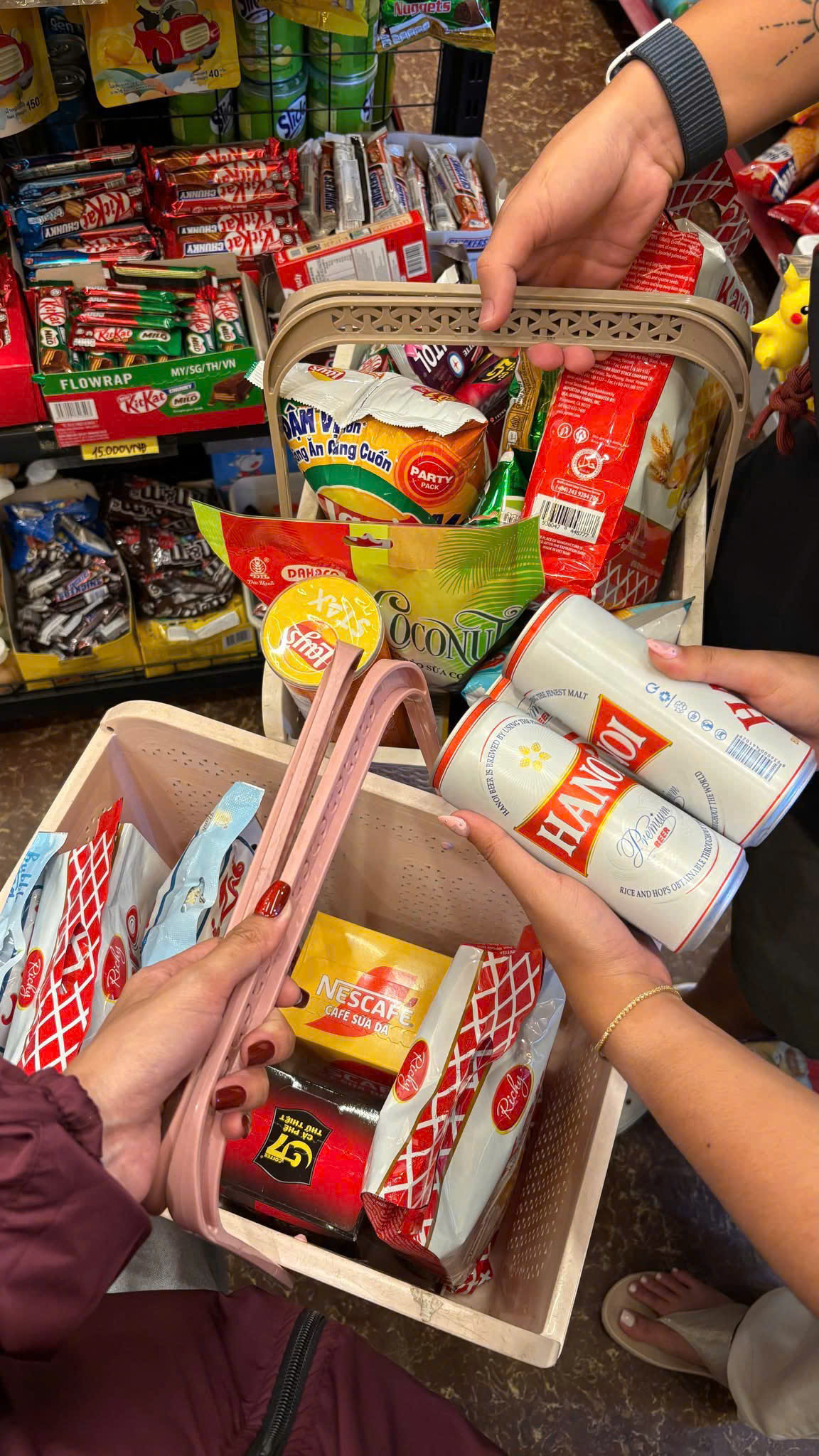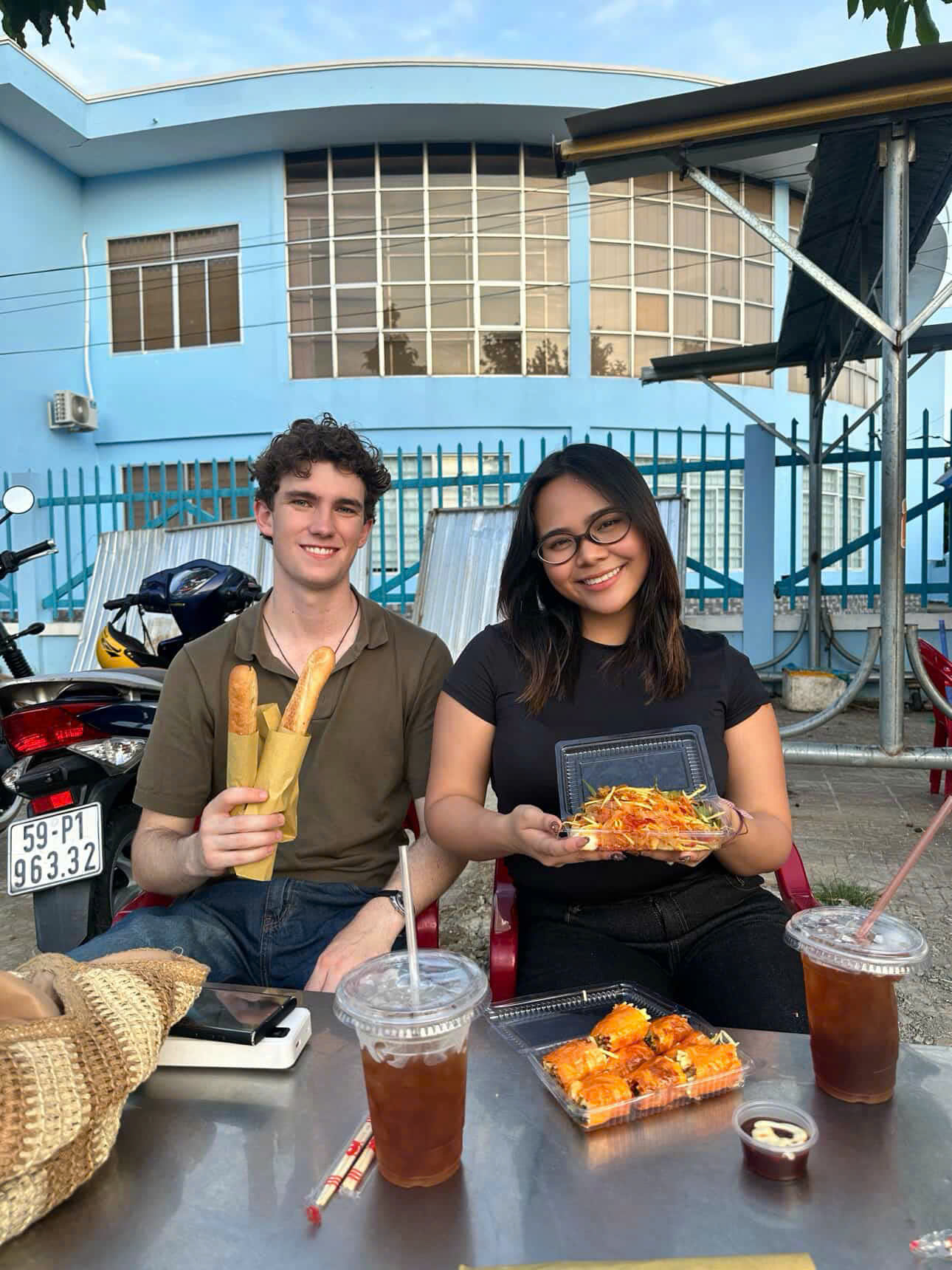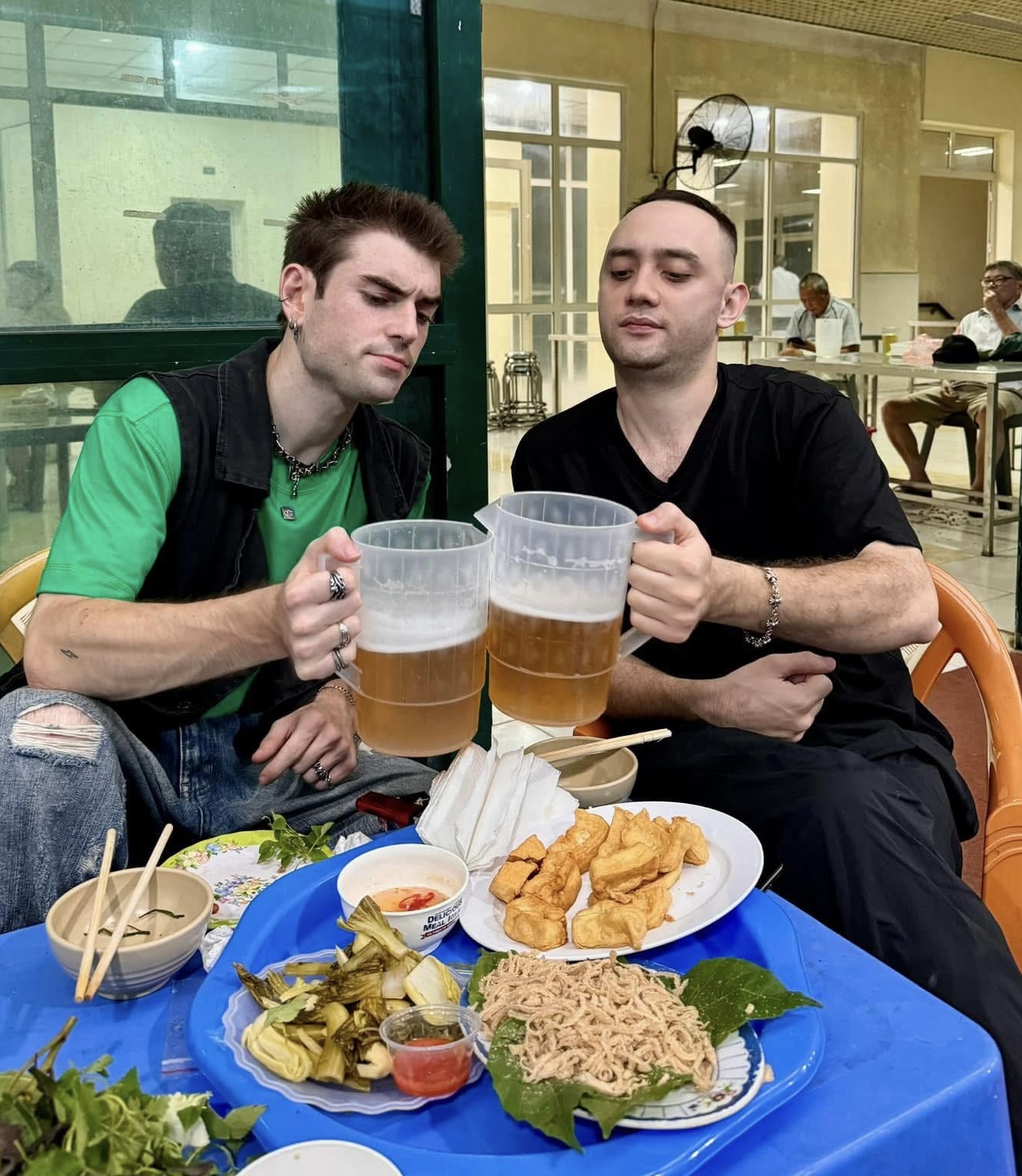"My snack haul is nothing compared to my friends'. They spent over 10 million VND (approximately 425 USD) and still wanted to buy more," the 25-year-old Filipina said.
Dannica arrived in Hanoi in mid-June for tourism, but she admitted her biggest motivation was to follow the "trying Vietnamese snacks" trend on TikTok.
Upon landing, Dannica rushed to convenience stores and supermarkets in Hanoi to buy the snacks recommended online. She immediately fell in love with the variety of food available.
"I can eat a whole package of toasted coconut cookies without getting tired of them. They're even better than many desserts at high-end restaurants in the Philippines, and much cheaper," she said.
Dannica was also surprised by the diverse variations of Vietnamese food. She noted that with just one ingredient like young rice flakes (com), numerous dishes can be created, such as sticky rice, sweet soup, cakes, ice cream, and candy.
Before returning home, she and her friends strolled through supermarkets and shops in Hanoi's Old Quarter, hunting for their favorite treats to take back home to enjoy and give as gifts. Her video showcasing the packing of hundreds of coffee packets, various snacks, and cakes also attracted tens of thousands of views on TikTok.
For the past two months, the trend of "trying Vietnamese snacks" has emerged on social media, attracting thousands of foreign accounts. Videos showing the packing of Vietnamese snacks like instant noodles, chips, various cakes, dried fruits, and instant coffee with the hashtags #snackvietnam and #vietnamfood have garnered millions of views. Many foreigners express their delight, even "addiction," to these snacks, which are both delicious and cheaper than in their home countries. Some have even posted asking for advice on "how to transport large quantities back home" as gifts.
Hoang Nghia Dat, CEO of VNA Travel, said that recently, in addition to booking tours to explore scenic spots, international tourists have been requesting street food and asking to be guided to snack stalls in alleyways and sidewalks.
"Previously, they often wanted to eat famous dishes like pho, bun cha, or Vietnamese home-cooked meals in restaurants. Now, they enjoy standing on the sidewalk eating fried donuts, salads, drinking draft beer, or looking for fresh spring roll carts," Dat said.
Thuy, owner of Tai Loc sweet soup shop in Hoan Kiem district, Hanoi, also said that in the past month, the number of foreign customers visiting her shop has increased significantly compared to last year. They choose to eat traditional dishes, especially young rice flake sweet soup, cassava sweet soup, and grilled banana with sticky rice – dishes typically ordered by locals.
"Some are surprised to enjoy sweet soup in a traditional house setting for only a few tens of thousands of VND (a few USD)," Thuy said. She has also noticed nearby convenience stores recently bustling with foreigners buying snacks, something she rarely saw among tourists before.
 |
Snacks that Dannica Refe bought. Photo: @nicsrefe/TikTok |
Explaining this trend, Nguyen Tien Dat, Vice President of the Hanoi Tourism Association, said thanks to the development of social media, many foreign tourists have shifted from package tours to independent travel, following reviews and exploring Vietnamese cuisine on their own. The diversity of Vietnamese street food and snacks, from savory to sweet, combined with affordable prices and appealing flavors, attracts international visitors.
Earlier in 2025, the world's leading food guide, Taste Atlas, announced that, in addition to pho and banh mi, several other Vietnamese dishes, such as bun dau mam tom (vermicelli with fried tofu and shrimp paste), chao long (pork offal porridge), bo bia (fresh spring rolls), and banh ran (fried donuts), were featured in the top 100 best street foods in Southeast Asia.
"Cuisine is an important factor in the development of the tourism industry in general. The act of tourists buying snacks to take home, although a small gesture, helps spread the culture and cuisine of our country to the world."
Dat reported that from the beginning of 2025 to now, international visitors to Vietnam have increased by nearly 23% compared to the same period last year. He suggests that management levels should strengthen food safety measures at street food stalls and sidewalks and promote Vietnamese snacks more effectively. "So that many tourists return to Vietnam for delicious, nutritious, and affordable food," he said.
 |
Zane Hanson (left), 21, from New Zealand, enjoys snacks in Ho Chi Minh City, 7/2025. Photo: Provided by the subject |
Parking his motorbike in front of a primary school in Ho Chi Minh City, Zane Hanson from New Zealand approached a bicycle stall selling candy floss, fresh spring rolls, and shaved ice with syrup. The 21-year-old proudly shared that thanks to his Vietnamese girlfriend, he had the opportunity to experience snacking at a school gate, where hundreds of types of food are sold for only 5,000-20,000 VND (0.20-0.85 USD).
Zane tried candy floss, made from malt syrup spun into thin threads and placed on a crispy cracker, eaten with shredded coconut. He also ordered a cup of shaved ice drizzled with strawberry, blueberry, and orange syrups. Besides beer, this was the first snack he found refreshing and perfect for the heat.
"I had tried instant noodles, pho, and packaged coffee that my girlfriend brought over, and I thought those were the only basic Vietnamese foods until the trend of hunting for Vietnamese snacks spread online." In early July, Zane bought a plane ticket to Vietnam to catch the trend.
The New Zealander said that in his country, people usually snack on cookies, chocolate, candy, or potato chips. Snacks and street food are not very common. He was also shocked at how cheap the food was here compared to the quality. Zane gave the example of a milk tea costing about 160,000 VND (6.80 USD) where he lives, while in Vietnam, a glass sold on the sidewalk for 20,000 VND (0.85 USD) also comes with chewy tapioca pearls.
Zane then followed the children to a grocery store and mimicked them, buying instant noodles for kids, spicy chips, salted dried fruits, and rice paper snacks. He was captivated by the variety of flavors: sour, spicy, salty, and sweet.
"The stalls around the school are filled with students and adults eating and chatting. I learned that this is not just a place to eat but also a place associated with the childhood memories of many Vietnamese people," the 21-year-old said.
 |
Maximilian Rolf (left), from Germany, enjoys sidewalk snacks and fried donuts in Hanoi. Photo: Provided by the subject |
Having lived in Hanoi for over three years, Maximilian Rolf says he loves afternoon snacks with friends at sidewalk stalls and street vendors. This is also part of Vietnamese culture and lifestyle; eating and chatting is often an effective way to relieve stress after work.
The 31-year-old German added that in his country, there are many types of snacks, from sweet to savory, but finding similar snacks in Vietnam is often difficult, and if available, they are expensive.
"Fried banana is a dish I eat every week; it's surprising how appealing this fried cake with fruit can be. Hanoi also has savory fried donuts eaten with fish sauce and green papaya," Maximilian said. He initially found it strange but was later captivated by the blended flavors.
Nga Thanh












